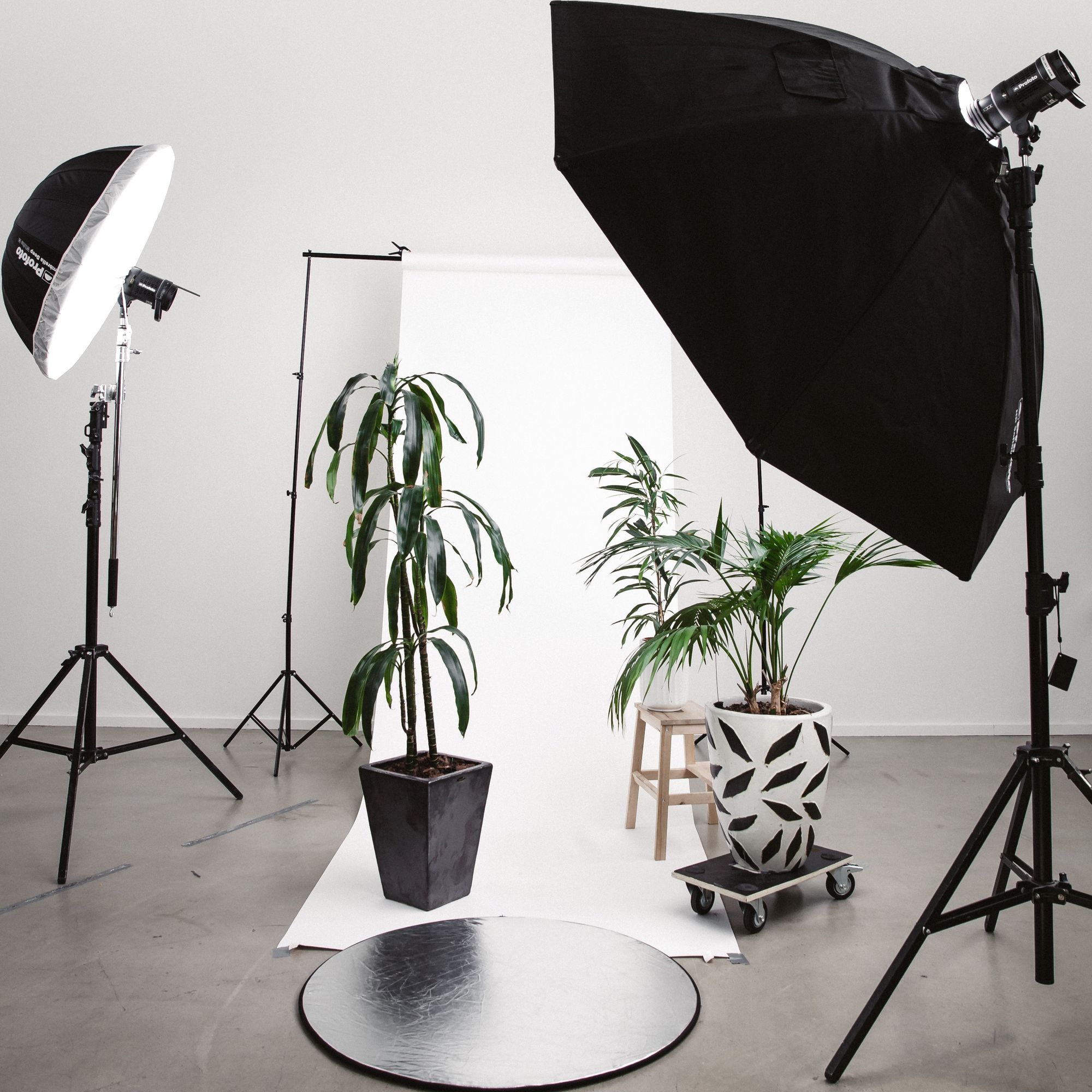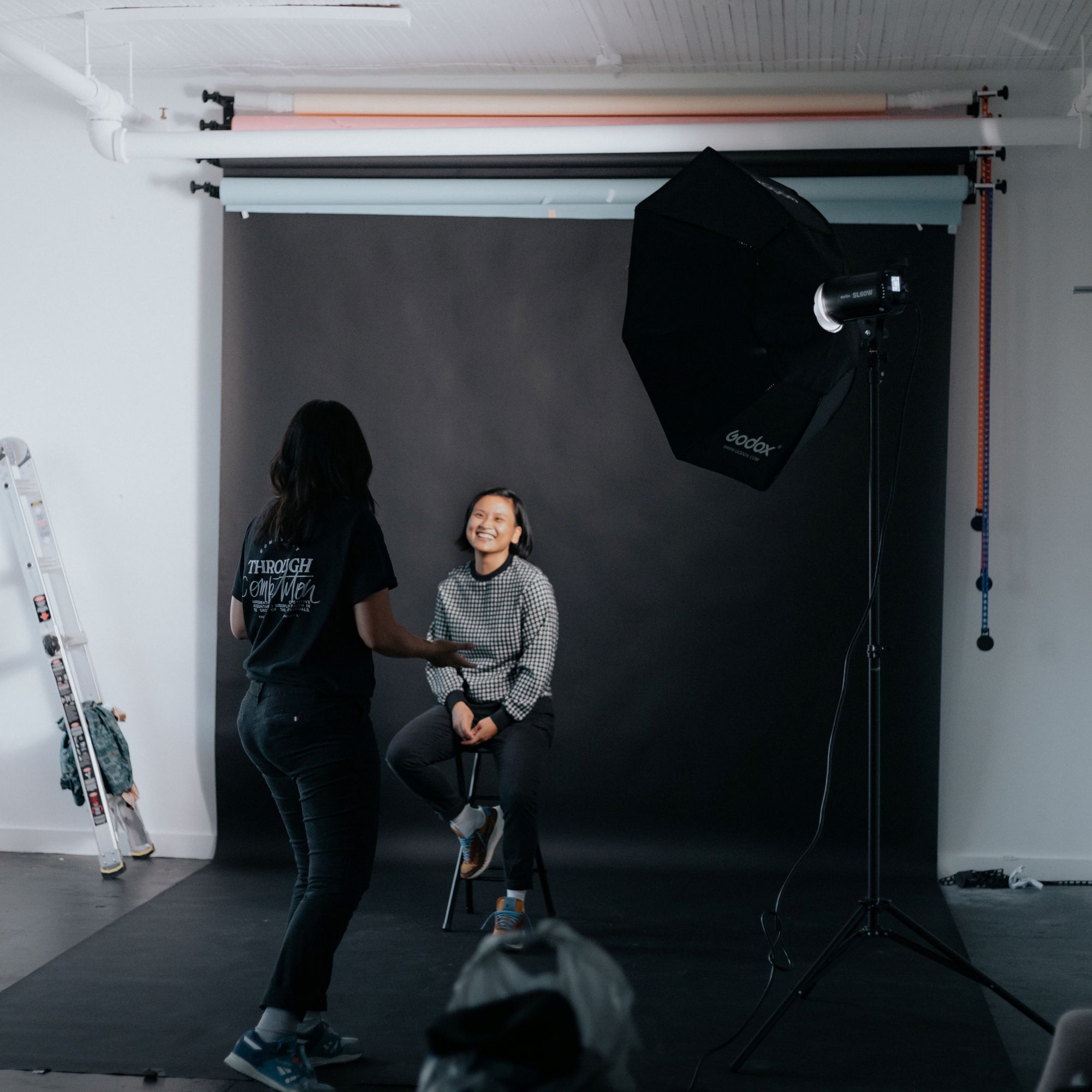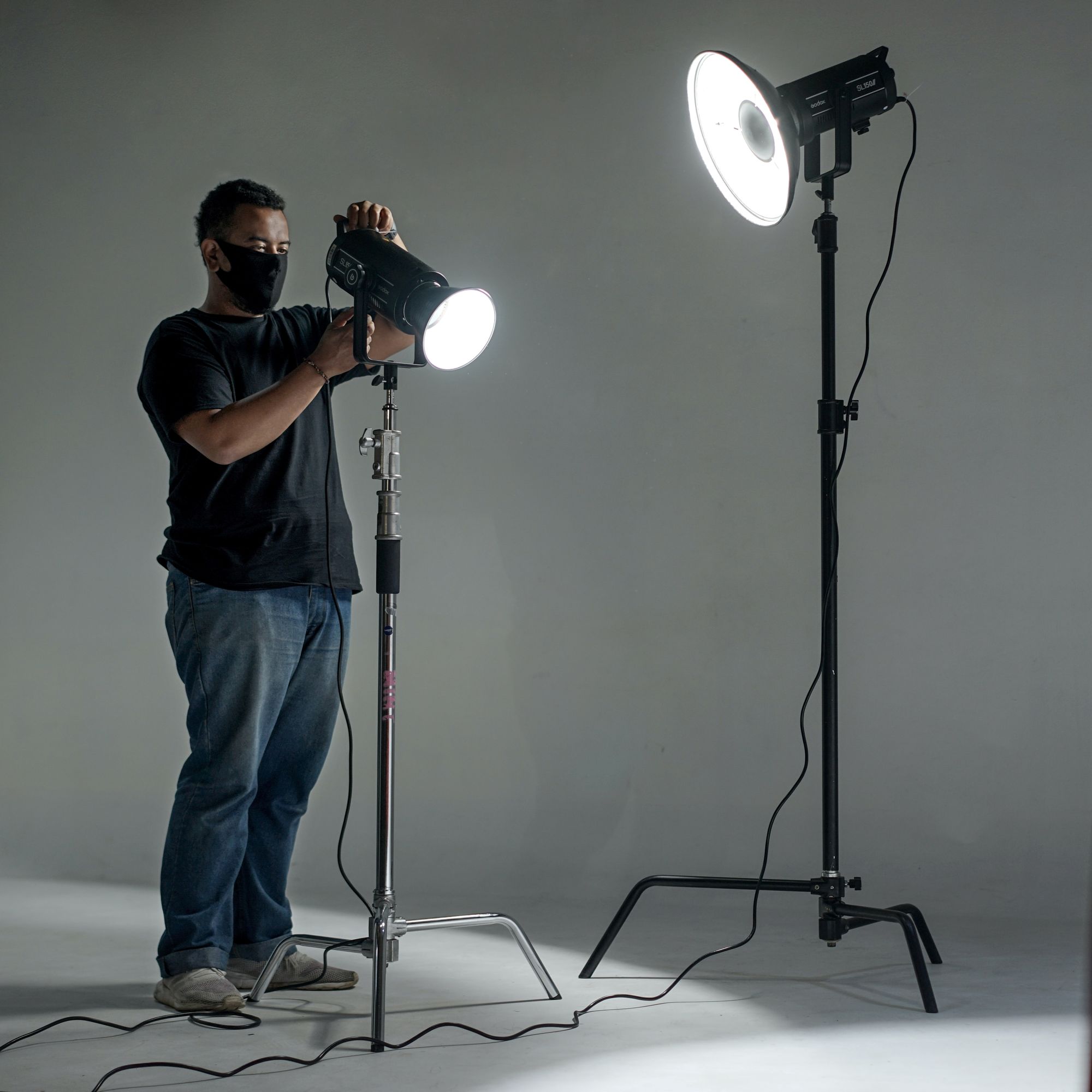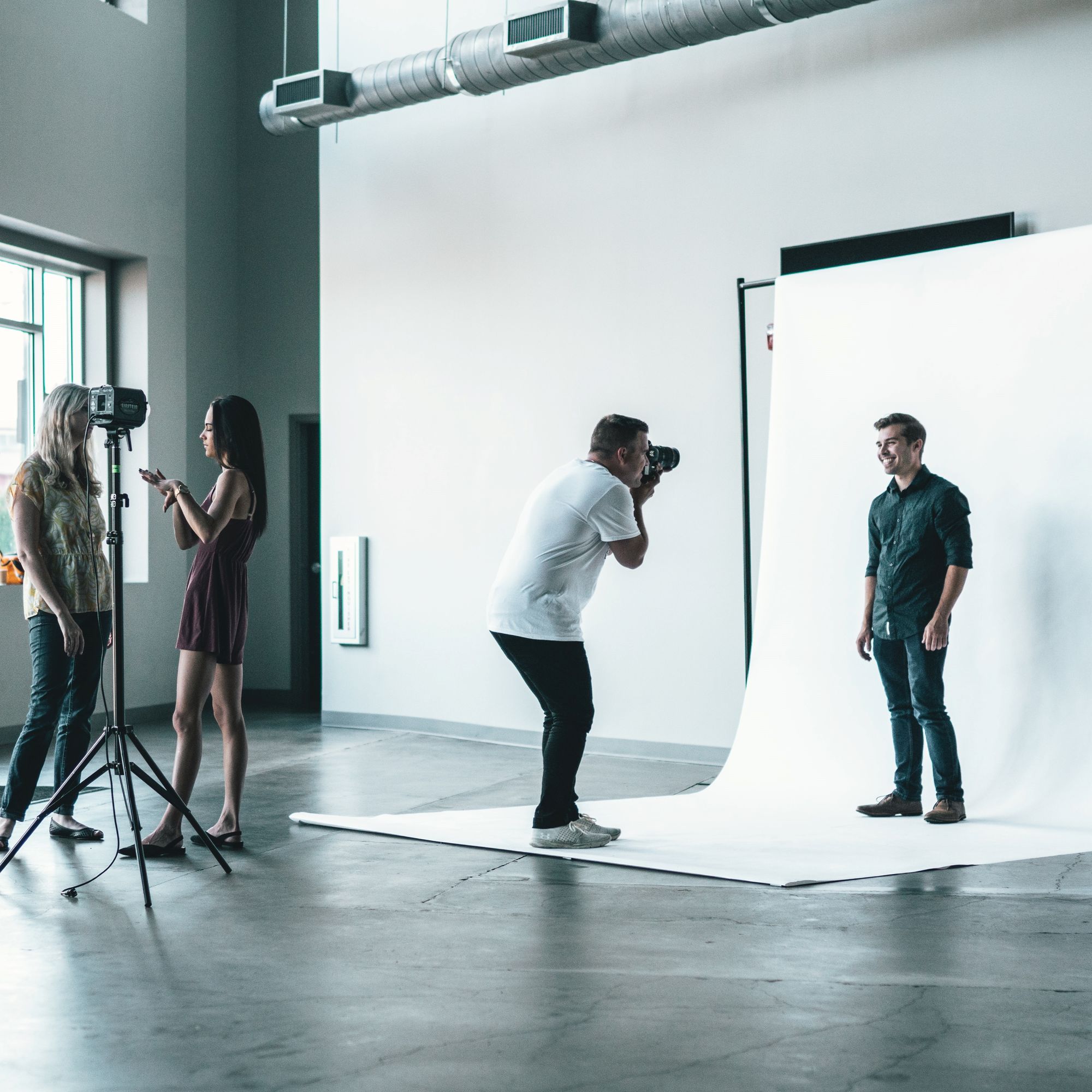Studio Photography: 4 Essential Tips to Create Your Own
Rent film gear from local filmmakers.

Rent film gear from local filmmakers.
Studio photography is one of the oldest disciplines in photography. But what exactly is it?
Don't worry, because I am here to teach you all about studio photography. So follow along, and learn all you need to know to start your journey!
If you want to learn more about photography, consider reading our article on photography 101.
What is studio photography?
Studio photography is exactly what it sounds like, photography done in a photo studio.
Studio photography is an indoor photography discipline used for its controlled environment. The photographer has total control over the lighting, background, and all other aspects of the photoshoot.
It is used for product photography and portrait photography. That's because both require specific lighting and control over the subject.

Advancement of lighting techniques in studio photography
Lighting is the bread and butter of studio photography, and it is what makes a good picture. The reason you need lighting is that it improves your photography. It allows you to shoot at a lower ISO, making your image less grainy.
Since you have control over the lighting, you should utilize it to the fullest.
When it comes to lighting, there is a bunch of different options. And we've listed a few of the most popular solutions here.
Flashbulbs
Flashbulbs were developed for underwater photography but became a must-have for any studio photographer once it was found safer to use than flash powder.
Flashbulbs are great for lighting up a wide area for a short time. They're still used by experienced photographers. If you plan on using one, you'll have to be careful. Flashbulbs are essentially metallic foil powered by a battery. So while they're safer than flash powder, they can still get hurt or potentially start a fire.
Electronic flash
The electronic flash was invented in the 1930s. It's the preferred lighting method for most studio photographers. It is safer than a flashbulb and also reusable.
The electronic flash revolutionized studio photography because of its speed and ability to synchronize with a camera. The electronic flash is faster than the shutter speed. The photographer can then utilize maximum shutter opening.
The electronic flash can be built-in into your camera or used externally. If you're a studio photographer, you're almost required to have at least an electronic one.

Camera exposure control
The exposure control of the camera is also something that has changed. In the beginning, the photographer would manually control the camera's shutter.
However, as flashes became a thing, this wasn't a viable option. That's why adjustable shutters were invented for the camera, where you could set the shutter speed to fractions of a second.
It created a new dilemma because now they needed to match their exposure with their lighting intensity. This led to the invention of the light meter, which helped evaluate the intensity of the light. It gave the photographer the ability to adjust the exposure time accordingly. You can learn more about exposure here.
Essential studio photography equipment
When it comes to studio photography, there's nice-to-have and need-to-have equipment. We're going to focus on the things that you need-to-have, to get your studio photography going.
Camera and lens
First of all, you'll need a camera and lens. Yes, shocking, I know. But you need to research the right camera and lens because it has a huge impact on your photos.
You should have the ability to change the shutter speed, aperture, and ISO. This is essential to properly take pictures with a flash. The camera should reach ISO numbers around 100 or lower and have a shutter speed of at least 1/125.
When considering a lens, you should look at either a zoom lens or a prime lens.
The zoom lens is versatile and allows for many types of uses in the studio. It is the one for you if you're a beginner.
The prime lens is faster, lighter, and takes sharper images. However, they're not as versatile as the zoom lens. They excel in taking detailed pictures, making them perfect for things like product photography.
If you want to get inspiration on which camera to use, you can read our article on the best portrait photography cameras. It will give you a good idea of which cameras are the best in a photo studio.
We also have an article on the best portrait lenses. It similarly gives you insight into how a lens can affect your studio photos.

Tripod
A tripod comes in handy because it allows you to take pictures without shaky hands.
It also allows you to easily adjust the angle and height of the camera, and you can be sure that the angle never changes once it's locked in place.
Lighting, light stands, light modifiers, diffusers, or reflectors
Lighting is crucial for the quality of your picture, and for that, you'll need at least one lighting source.
You can use different types of lighting equipment like light stands or light modifiers. These will allow you to tinker with it, to illuminate your object or subject.
You can also use diffusers or reflectors to change the angle of your light or give it a different look.
If you want to learn more about lighting, consider reading our article on Three-Point Lighting. There you'll learn everything you need to set up your light.
A backdrop
A backdrop is a roll of paper or fabric you put behind your object/subject in the picture. It is essentially the background.
A backdrop is typically white, but it can also be of different colors. It all depends on what you think would look best for the picture.
When taking photos of clothes, many opt to use a white background to put all focus on the piece of clothing. But you could also make the background blue or red if it fits the subject.
Editing software
Lastly, having some good editing software is necessary for ironing out all of the little things.
You can use the editing software to do color correction, add other materials such as your company logo, crop it, add visual effects, etc.

4 tips on how to set up a professional photography studio
If you want to set up your professional photography studio, there are plenty of ways to approach such a task.
To make it easier for you, we've come up with 4 essential tips for setting up your studio.
1. Select a studio space that suits your artistic vision
You have to consider the studio where you want to set up. The first thing you need to consider is if you even need to rent a studio. Maybe you have a garage, a spare room, or something similar where you could set up your equipment.
It all depends on what kind of space you currently have and how much you need. If you're planning on shooting portraits or small products, a garage might suffice.
But if you're planning on shooting things like cars, bikes, or bigger subjects in general, you should probably rent a studio.
2. Carefully consider your lighting sources
You have to consider what lighting sources are there in your studio. Preferably there are no windows, so you have full control over the lighting. But if there is, you have to consider the impact it will make, depending on what time of day you're shooting.
Maybe you need blackout curtains or just a fill light to even it out. The lighting could also work to your advantage, and you find a space with really good light sources, which helps you save money on lighting equipment.
But then again, you should never go down on lighting equipment!
3. Find an appropriate backdrop
Find the backdrop that fits your style. If you're doing photos for the same webshop or clothing line, you can and probably should just stick with one for continuity.
But if you're planning on shooting different content for more people, consider keeping different colored backdrops in your studio to allow for more versatility in your shots.
4. Gather all your needed photography gear
Lastly, it is good to build an arsenal of photography gear. The more variety you have in tripods, lighting equipment, lenses, and such, the more versatile you can be.
Versatility is great for expanding your business to different areas if you're finding it hard to suffice with your current work opportunities.

Up Next: Fundamental photography gear
That's all you need to know about studio photography. I hope you learned a thing or two!
If you want to learn more about elemental gear for photography, look no further than our article on camera equipment.
How to set up a photography studio?
1. Select a studio space that suits your artistic vision
2. Carefully consider your lighting sources
3. Find an appropriate backdrop
4. Gather all your needed photography gear
What does a studio photographer do?
A studio photographer is a photographer that operates in a photography studio.
What do you need for studio photography?
Camera and Lens, Tripod, Lighting, light stands, light modifiers, diffusers, reflectors, A backdrop, and Editing software.























